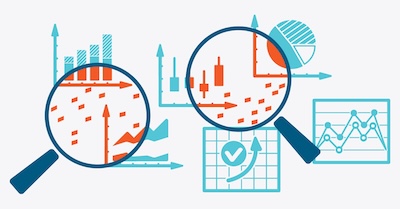Data Preparation for Analytics and AI: A Practical Guide for Finance Professionals
Guest Contributor Varun Vemula, BS, MS

Introduction: Why Finance Professionals Must Prioritize Data Preparation for Analytics and AI
In today’s VUCA (Volatility, Uncertainty, Complexity, and Ambiguity) world, the role of the Chief Financial Officer (CFO) and finance professionals is undergoing a profound transformation. Once viewed primarily as stewards of financial reporting, today’s CFOs and finance teams are increasingly regarded as strategic leaders, providing invaluable insights that shape business strategy, uncover growth opportunities, and drive the overall direction and performance of their organizations. CFOs today are now expected to deliver real time insights guide strategy and ensure compliance.
However, despite the widespread recognition of data as a critical asset, many enterprises still face challenges with their data landscape. In most organizations, business and finance data remains incomplete, fragmented, or incompatible across various IT systems, teams, and processes. In the world of finance, where quality and usability are non-negotiable, this poses a significant hurdle. So, how can CFOs and finance professionals ensure they have access to high-quality data for analytics and artificial intelligence (AI)?
This article explores the principles of Data Quality and introduces the FAIR (Findable, Accessible, Interoperable, Reusable) data management framework, offering deep insights to CFOs, controllers, treasury teams, and financial planning and analysis (FP&A) professionals. To harness the full potential of analytics and AI in finance, it is crucial to first establish a foundation of data quality. Only once data meets high standards of quality, the FAIR principles truly maximize its value for informed decision-making.
Before you read further, spend a few minutes on Can Data Be A Liability For The Business?, which includes some great lessons on data. For example, data is a business asset only when it is consciously captured and deliberately managed. In it’s unmanaged form, data is a liability!
Understanding Data Quality in Finance
Data quality is the measure of how well data supports financial operations, compliance, and decision-making—critical tasks for finance teams. Research shows that more than 80% of work in analytics and AI is spent on data preparation. For finance professionals, data preparation means transforming, cleaning, and organizing raw financial data into a format that’s ready for use in reports, analysis, and AI models.
But how can finance team measure and improve data quality? Before AI can deliver value, data must be trusted. The CACTUS model provides six-dimensional lens for assessing financial data quality. It provides an effective way to assess data quality by focusing on six key dimensions:
- Completeness: Are all necessary data points, such as GL codes or cost center details, included?
- Accuracy: Is the data correct, including values such as exchange rates, allocations, or journal entries?
- Consistency: Is the data uniform across IT systems and periods?
- Timeliness: Is the data up to date for decision-making?
- Uniqueness: Are there duplicates that could distort analysis such as duplicate entries for revenue or expenses?
- Stability: Is the data structure consistent, secure, and reliable over time?
While many other dimensions are important, these six are most relevant when preparing financial data for analysis or AI. A lack of data quality can lead to flawed reports, missed forecasting opportunities, and poor business and finance decisions.
Leveraging Data Management in Finance
Once data quality is assured, it must be organized and structured for efficient use across financial systems. Data management involves collecting, storing, protecting, and maintaining data to make it accessible for analytics. The FAIR principles ensure that the data is not only high-quality but also effectively usable for business and financial use cases.
The FAIR framework is vital for finance teams, particularly when managing complex financial and business data sources – internal and external, structured and unstructured data and more. Here’s how each principle applies to financial data:
- Findable: Can you quickly locate the financial data you need (e.g., actuals vs. budget reports)?
- Accessible: Can the right stakeholders from FP&A, treasury, and accounting access data securely and without delay?
- Interoperable: Can the data be easily integrated across different IT systems?
- Reusable: Is the data clearly documented and available for analytics, AI operations and compliance?
For example, integrating data from multiple regions or business units or systems requires that the data be well-documented, standardized, and structured. While FAIR doesn’t solve data quality issues, it ensures that data is accessible, understandable, and usable.
Why CACTUS + FAIR = Success for Analytics and AI in Finance

CACTUS ensures that your data is trustworthy, while FAIR enhances the usability of that data. These two elements must work in tandem for effective analytics and AI in finance. Here is how they complement each other:
- Data Quality with CACTUS Framework guarantees that the underlying financial data is complete, accurate, and consistent. Without this step, even the most sophisticated AI models or analytics tools can produce unreliable results.
- FAIR Principles ensure that once the data is of high quality, it is findable, accessible, interoperable, and reusable across your financial systems. FAIR is the framework that makes data more valuable once it is trustworthy.
Here is the step-by-step approach for preparing financial data for analytics and AI.
1. Data Quality Assurance
First, ensure that the data meets high-quality standards using the CACTUS framework. For example, when performing a Cash Flow Forecast analysis, the treasury team can use the CACTUS framework to validate data quality. They would ensure all accounts such as receivables, payables, payment terms, and credit lines, are complete and accurate. Also check if the data is consistent across periods and systems and ensure there are no duplicates in the cash inflow or outflow data.
2. Apply FAIR Data Management Principles
After improving data quality, focus on making your data findable, accessible, interoperable, and reusable (FAIR) across the finance ecosystem. By applying FAIR business and finance teams create shared visibility and eliminate the fragmented data sources
- Findable:
- Use consistent naming conventions and metadata such as data source, owner, format, and frequency.
- Ensure data is stored in searchable repositories, such as a centralized data catalog or master data management (MDM) system.
- Accessible:
- Implement secure, standardized access protocols using SQL endpoints and APIs across the organization.
- Define clear data access roles using Single Sign-On (SSO) and Role-Based Access Control (RBAC).
- Interoperable:
- Ensure consistent business logic across tools, such as how “Revenue” is calculated (invoices vs. cash).
- Use open data formats (e.g., CSV, JSON and Parquet) and standardized business definitions (e.g., IFRS account hierarchies).
- Reusable:
- Maintain data lineage, version control, and metadata to track the history and source of financial data.
- Use templates for documenting data structures and logic to ensure clarity and prevent misinterpretation.
For instance, when managing Debt and Liquidity Analysis across multiple business units and banking systems, the finance team would make the data findable by tagging it with relevant metadata, such as the loan type, interest rate, and maturity date. The team would also ensure the data is accessible by storing it in a centralized data platform with secure access protocols, allowing treasury professionals to pull data in real-time. To ensure interoperability, they would standardize definitions across IT systems (e.g., “Debt” defined as total long-term liabilities), and for reusability, they would track the lineage of each data set, including the loan term and adjustment factors.
3. Publish and Share Data Securely
Finally, ensure that data is accessible to the right people across finance functions, securely and in compliance with governance and privacy standards. Implementing centralized data platforms and using APIs will enable finance professionals to collaborate seamlessly across regions, departments, and systems, while adhering to corporate and regulatory standards.
For example, a Quarterly Financial Report can be shared securely with senior management using a cloud-based data platform that enforces access control. Only authorized finance professionals with the appropriate permissions can access, analyze, and share the report. The platform also allows for collaboration, ensuring that team members can comment, update, and share insights, reducing the time spent on manual data gathering.
Conclusion: Why CACTUS + FAIR Matters for Finance
In a world where finance professionals are increasingly tasked with delivering timely insights, the ability to trust and effectively use financial data is non-negotiable. High-quality data is the foundation of analytics and AI-driven decision-making. But it’s not enough to just have quality data; it must also be accessible, understandable, and reusable. By focusing on CACTUS data quality dimensions and applying the FAIR principles, FP&A, accounting, and treasury teams can turn data into a true business asset. In the age of analytics and AI, data quality plus FAIR is not just a “best practice”—it’s the key to driving smarter, faster, and more impactful business decisions.
Identify your path to CFO success by taking our CFO Readiness Assessmentᵀᴹ.
Become a Member today and get 30% off on-demand courses and tools!
For the most up to date and relevant accounting, finance, treasury and leadership headlines all in one place subscribe to The Balanced Digest.
Follow us on Linkedin!
